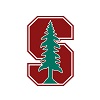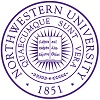专业详情
Master of Science (MS) Design students will develop a strong practice in human-centered design abilities, making, creativity, and applied project work in their chosen domain. The first year foregrounds a structured design practice that pushes students to stretch intellectually and grow their skills as makers across mediums. Students select two focus areas: a methods focus and a domain focus. Methods focus areas allow students to gain a depth of practice in a select set of mediums. Domain focus areas allow students to explore challenges in different disciplines where designers can have an impact and where there are increasing academic and professional opportunities.
MS Design students will be equipped with the following knowledge, abilities, and perspectives:
[1] MAKE. The knowledge and ability to prototype and make across a wide range of mediums, existing and emerging. Students can contextualize and apply design principles across disciplinary domains. They have broad material literacy and can build and analyze in many mediums, like physical products, code, policy, and emerging technologies.
[2] CARE. The care and responsibility to be leading stewards of the planet, all people, and the data we generate. Students know how to work slowly and fast, with appreciation and respect for varying time scales of change. They learn from and with other humans and the environment. They realize the importance of equity, ethics, and implications. They prioritize people and the planet over profit.
[3] SPARK. The quirky creativity that produces new world ideas. Students see trends, spot new opportunities, and have the courage to try something untested boldly. They relish disciplinary intersections, embrace ambiguity, and can collaborate and communicate with diverse people. They can set visions and paths for them.
[4] ADAPT. The flexibility of adaptive learners. Students can synthesize and integrate ideas and experiences from across the different aspects of their Stanford education and beyond. They can articulate their capacity and needs as learners when tackling open-ended problems. As emerging leaders, they can establish the conditions for others’ creativity to emerge.


